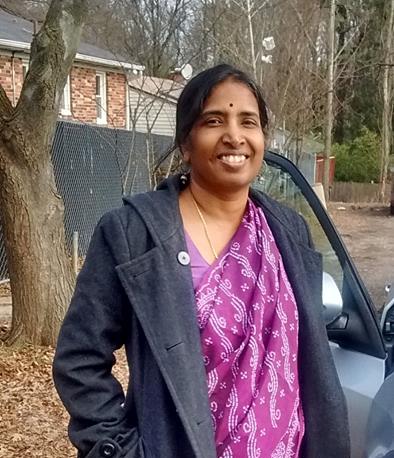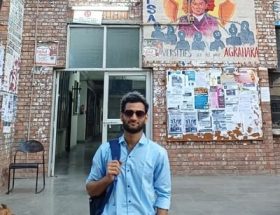Round Table India
This is a part of an online conversation between Kuffir and Anu Ramdas (Editors of Round Table India – who have worked for over a decade and half creating digital platforms for Bahujan writings, discussions and conversations). Kuffir is based in India, Anu Ramdas is based in the USA.
Kuffir: What divides American society?
Anu Ramdas: In the past, my prompt answer would have been race. But that is a rather hasty view of a foreign society that has an influx of peoples from all over the world. In the first decade of my stay in the USA, I was working at Cornell University in Upstate New York. The university, the college town and surrounding areas were majority white. The absence of African American colleagues and neighbors was stark, it was unmistakably a racially divided society. I was also looking at American society largely through the writings of Black authors that I was reading voraciously during that time.
Since my perception about American society was partly informed by my workspace, I would like to note that scientific institutions per se can offer unique insights into a society’s social structure and its divides.[1]
As I moved on to work in other cities, in different scientific organizations, the composition of my co-workers’ race stayed the same. Whether it was the majority white city of Ithaca or majority black city of Baltimore, the whiteness of the scientist community prevailed.
The absence of Black fellow scientists communicates an immediate idea that the societal divide is racial. Other Americans’ and colored immigrants’ absence in these institutions is also a stark reality but it was not a thematic in the books that I was reading or in the mainstream narratives.
Who else other than Black people are excluded? Are they all racially distinct from White people? Why are they excluded if they are not racially distinct? These are questions that led me to look for explanations.
Broadly drawing from Lenski’s multidimensional model of ‘class systems’ for American society would be useful here. The class systems are grouped into 4 categories: The political class system. The property class system. The occupational class system and the ethnic class system.
Each class system has in common key metrics such as wealth, occupation, education, political authority, ethnicity etc.
The classes within the political class system are the elites, the bureaucracy, the electorate and the apolitical populace. Within the property class system are the upper class, middle class, the working class, the poor and the underclass. Within the occupational class system are the groups— capitalists, professionals/managers/entrepreneurs and the skilled workers and technicians followed by the unskilled workers and lastly the unemployed.
Based on their population size the ethnic class system has Anglo-Americans and Euro-Americans (together, White Americans); Asian-Americans; Hispanic-Americans; African-Americans and American Indians.
When the metrics of wealth, education, and political authority are used, the White-Americans occupy the highest class category in all the class systems.
The foundational myths about America being class free have been disapproved by data and scholarship on this topic. To some extent, the persisting notion that it is class-free comes from the history of slavery, the civil war and the civil rights movements against slavery and the Jim Crow era which together highlighted the racial divide as a defining aspect of the social structure of America. However, the overarching divide is class as it encompasses the racial and ethnic divides.
To be very clear, a class is a set of entities or individuals where all individuals have similar or equal access to wealth, education, political and religious authority etc.
The fluctuations in one of the above metrics, for example, loss of wealth is not likely to displace a member into another class as the other metrics are networked in ways to cushion such fluctuations. On the other hand, gains made with a set of metrics far beyond the average of a said class assures those members a place in a higher class (?). This needs further examination.
Racial-accommodation confused for Class transformation
Since the class system is not a closed one, in theory, members from other groups can gain access to the higher classes as individual members. In practice however, individuals can gain a lot but are not entirely free from the vulnerabilities of the classes they exited from. For example, Black or Asian millionaires can buy mansions in gated communities but still be excluded from inner networks of those communities. At the level of discourse, victimhood narratives of the most marginalized are now harnessed to highlight the victimhood of the millionaires. The white elites respond with gestures of racial accommodation – more black actors fill Netflix shows, again imparting the notion that all is well. Social mobility as a device imagined and pursued as a class transformation process is in reality a racial/minority accommodation strategy. It is both tactical and strategic for the white elites to practice racial-accommodation which provides multiple ways of maintaining the class structure as is while also effectively diluting resistance and anger against them.
The more insidious outcome of class mobility is the projection of the success of the individuals to all of the members of the former class. This creates an illusion of resource distribution to lower class categories as a whole where in fact, it has aggravated the divide between the lowest and the richest.
A closer look at the identifier term ‘White-Americans’ gives the indication that they all belong to the white-elite class. This perception is largely gained from reading black perspectives – a counter to white elite discourses in academia and popular mediums. The absence of accessible perspectives from other ethnic groups including poor and unemployed whites in the public domain has contributed to the notion that America is class-free and is only beset by the racial divide between African-Americans and a homogenous White-American class. Without diminishing the decades of struggles by Black movements to articulate the race-conscious nature of American society, at the same being aware that black narratives have become useful to disguise the actual class structure, I would like to quickly draw on some references to the varied distribution of White-Americans and others in different class systems including the underclasses.
Toni Morrison on white indentured labor:
“She notes that in researching the book, she read White Cargo by Don Jordan and Michael Walsh, and was surprised to learn that many white Americans are descended from slaves.
“Every civilization in the world relied on [slavery],” says Morrison. “The notion was that there was a difference between black slaves and white slaves, but there wasn’t.” White slaves, called indentured servants, were people who traded their freedom for their passage to America.”
“The suggestion has always been that they could work off their passage in seven years generally, and then they would be free,” says Morrison. “But in fact, you could be indentured for life and frequently were. The only difference between African slaves and European or British slaves was that the latter could run away and melt into the population. But if you were black, you were noticeable.”
A closer look at the social class in the colonies reveals the stratification:
“The promise of a new life in America was a strong attraction for members of England’s underclass, who had few, if any, options at home. For example, in the Chesapeake Bay alone, some 100,000 indentured servants arrived in the 1600s looking for work; most were poor young men in their early twenties. Life in the colonies proved harsh, however. Indentured servants could not marry, and they were subject to the will of the farmers or merchants who bought their labor contracts. If they committed a crime or disobeyed their masters, they found their terms of service lengthened, often by several years. Nonetheless, those indentured servants who completed their term of service often began new lives as planters, farmers, or merchants themselves.”
Nancy Isenberg’s book White Trash: The untold history of class in America has this useful nugget of information:
“LBJ understood how Southern politicians tricked poor Whites. ‘If you can convince the lowest white man he’s better than the best colored man, he won’t notice you’re picking his pockets. Hell, give him somebody to look down on, and he’ll empty his pockets for you.'(p264) The poor White man was simply “a pawn in their [Southern politicians’] game,” as Nobel Laureate Bob Dylan sang in 1963.”
To be continued
~
Notes
[1] Professional science and its institutions by their very nature are designed to exclude different sections of a society. It may appear that because of the high barriers for entry it is seen as a hallmark of individual excellence that results in their inclusion. I argue that institutions of science are themselves a product of supremacist thought processes that expose societies’ structural divides.
~~~
Anu Ramdas is a founder Editor of Round Table India.









